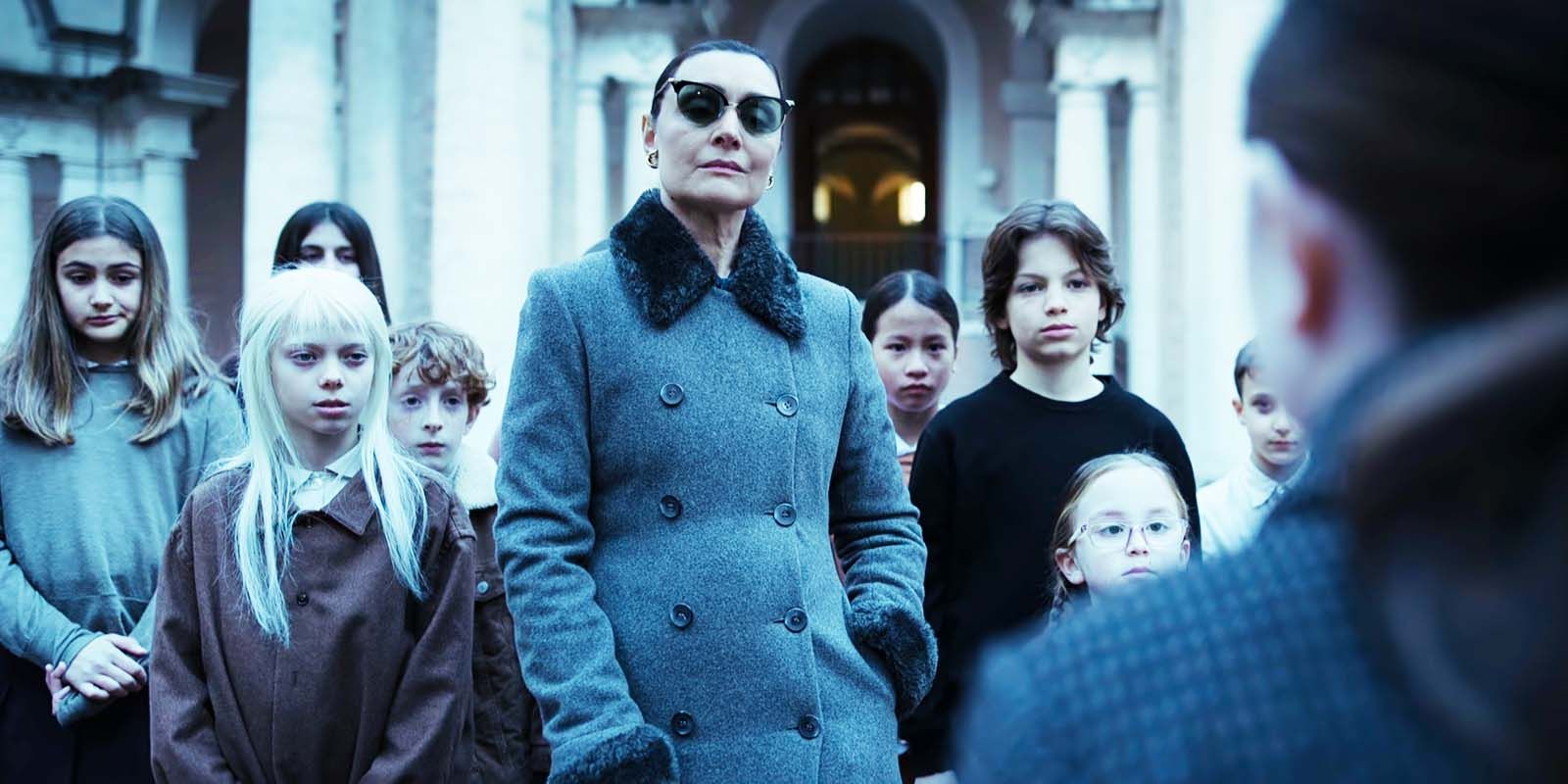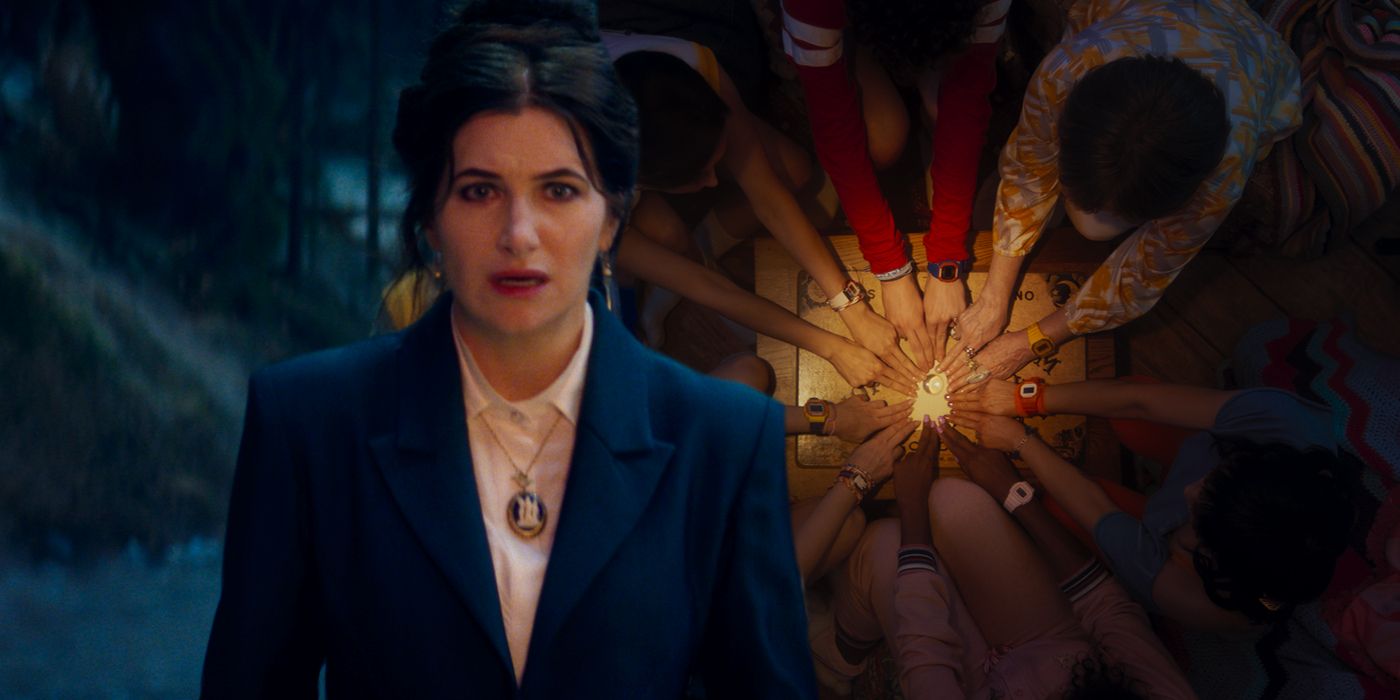Warning! SPOILERS about The Tearsmith ahead.
The ending of Netflix’s The Tearsmith lets Rigel and Nica find some happiness, facing the ghosts of their past and successfully beating them. Based on the international bestseller by Erin Doom, The Tearsmith intertwines Nica and Rigel’s present with their memories, delivering a heartbreaking story of the hurdles the two had to face along with their friends at the orphanage. Centering on Rigel and Nica, finally far from the abuse they were subjected to at Sunnycreek Orphanage, The Tearsmith’s ending manages to let them come to terms with the consequences of their stay there before they can embrace their happiness.
While The Tearsmith could be perceived just as much as a story about Rigel and Nica acclimatizing themselves to their new life with foster parents Anna and Norman as a tormented and forbidden love story between the teenagers, its ending clearly highlights the story’s villain, delivering justice. With the perpetrator finally revealed as such to the eyes of everyone, not just the children at the orphanage known as Grave, Rigel, Nica and Adeline can finally move on. By interweaving the tearsmith fable and the protagonists’ stories, The Tearsmith’s ending offers a happy conclusion to Rigel and Nica’s tragic story.

Related
8 Best Teen Movies Based On Classic Literature
These excellent teen movies are so cleverly disguised that viewers wouldn’t pick up on them being classic literature adaptions.
Rigel’s Fate & Choice To Leave The Milligans Explained
Rigel Left The Milligans Because He Wanted Nica To Live Her Dream Without Him
Lionel’s disgust at the bond between Nica and Rigel and Nica’s rejection of him prompted him to almost run them over in The Tearsmith’s ending, with the two forced to jump off the bridge to escape him. The jump didn’t kill them, but Rigel’s decision to reject the adoption put him back under Margaret’s care, resulting in Nica being unable to visit him at the hospital, as Margaret kept him isolated from all. Rigel finally awakened from the coma only after the end of Margaret’s trial, whose outcome rid them of Margaret’s clutch and her abusive methods.
Rigel’s decision to leave the Milligans and reject the adoption greatly influenced his fate at the hospital, as his stay with the Milligans was only a trial and he was still under the care of the orphanage. However, Rigel had only decided to let Anna and Norman foster him because he wanted to follow Nica, having always been in love with her. Afraid that he would have only hurt her dream, Rigel rejected the adoption so that Nica could have the family she always dreamed of away from him, believing himself as bad as everyone thought him to be.
Why Nica Chose To Testify Against Margaret
Rigel’s Incident Influenced Her Into Taking A Stand Against Margaret

Nica adamantly rejected Adeline’s request to testify against Margaret when her friend broached the idea after Rigel’s birthday party, making her choice to do so in The Tearsmith’s ending entirely unexpected. After Nica had made Margaret’s rules of “order, respect and obedience” hers, she always tried not to raise attention to herself considering Margaret targeted her the most among The Tearsmith’s characters, and she continued to do so even after Anna and Norman welcomed her into their home. Testifying meant coming clean about all the abuse Nica was subjected to at the orphanage, making it a big risk for her.
However, the timing of Rigel going back to Margaret’s care right after the incident that put him in a coma essentially separated him from Nica. Not being able to stay close to Rigel in his toughest time emboldened Nica, convincing her to finally tell the truth about Margaret, making herself vulnerable but also courageous enough to challenge Margaret’s version of the story. Being removed from Rigel’s side finally showed her that she had to face Margaret, as testifying against her could have made it impossible for Margaret to hurt anyone else.
Who Is The Tearsmith? The Orphanage Myth Explained
The Bedtime Story Helped Nica & Adeline Deal With The Orphanage Evils

The figure of the maker of tears reappears throughout The Tearsmith after the fable about him is retold by Nica via voiceover at the Netflix teen melodrama’s beginning. Nica introduced the tearsmith’s figure as that of a savior who gave people devoid of emotions the chance to cry, but her flashbacks also showed how the other children would use him as a scarecrow of sorts, whose arrival, motivated by bad behavior, others should have feared. As Margaret discouraged public expressions of emotions, Nica saw the tearsmith as something hopeful, reminding the orphanage children what it meant to feel.

Related
15 Best Romance Movies On Netflix Right Now
From lighthearted comedies like Always Be My Maybe to devastating dramas like Marriage Story, there are plenty of great romance movies on Netflix.
While Nica often accused Rigel of being the fearsome tearsmith, The Tearsmith’s ending revealed the truth about the bedtime story. Not only did Nica accept the myth was created to believe there could have been more to life than how Margaret made them live, but she also acknowledged Rigel as her tearsmith. Removing all the negative attributes of the figure left only someone who made it possible for others to cry, making Nica realize Rigel was her tearsmith because she cared about him the most, making her love for him something that could potentially cause her pain but also happiness.
How The Trial Finally Liberates Nica & Adeline From Their Past At The Orphanage
Winning Against Margaret Meant Freedom From The Pain Of Their Past
Adeline’s appeal to convince Nica to testify against Margaret included how Nica’s problems were those of everyone outside the orphanage. Indeed, despite having found loving families, both Nica and Peter bore the signs of the abuse they suffered, with the frequency of Nica’s nightmares and breathing difficulties proving Adeline’s point.
Telling the truth about Margaret to Anna and Norman already helped Nica, but being believed by the court gave her and Adeline the definitive chance to be rid of her. Not only did the trial outcome free all the kids still at the orphanage, but it also made Adeline and Nica’s past something easier to move on from, as the threat of Margaret didn’t hang over them anymore.
The Real Meaning Behind The Tearsmith’s Ending
Overcoming Their Past Finally Lets Nica & Rigel Revel In Their Happiness

Having The Tearsmith always shown the consequences of Margaret’s behavior in Nica and Rigel’s problems, its ending is undoubtedly positive for different reasons. Indeed, with Margaret likely in prison after the court found Nica and the others’ testimonies truthful, The Tearsmith’s ending freed Nica, Adeline and Rigel from the villain of their story. However, the happier ending comes from accepting their past and what it generated, realizing they can still be happy again despite how much they suffered because of it.

Related
Netflix’s 20 Best Teen Series Ranked
From Stranger Things to Sex Education to Heartstopper, Netflix is home to some of the best teen series around.
While Margaret having to face justice removes a huge threat from Nica, Rigel and Adeline’s lives, it won’t automatically cancel the scars she caused them. Still, by understanding it could be possible to move on, Rigel Nica and Adeline embraced their newfound freedom and tried to make the best of it. This lets The Tearsmith end in the best possible way for them, free from Margaret’s grasp and to pursue whatever they wished, which meant finally being together for Rigel and Nica.





